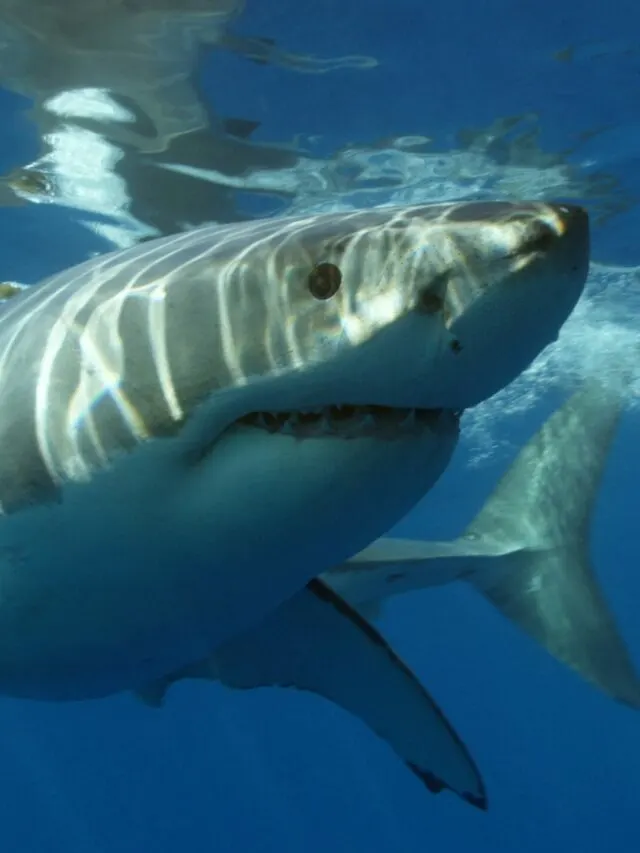Let’s get to know the Largest Shark of them all – The Great White Shark!
Great white sharks, one of the ocean’s most formidable predators, are instantly recognizable due to their distinctive gray top and white underside coloration. Distinct from most other shark species that possess merely one pair of gill slits, these magnificent sharks boast five-gill slits on either side of their head.
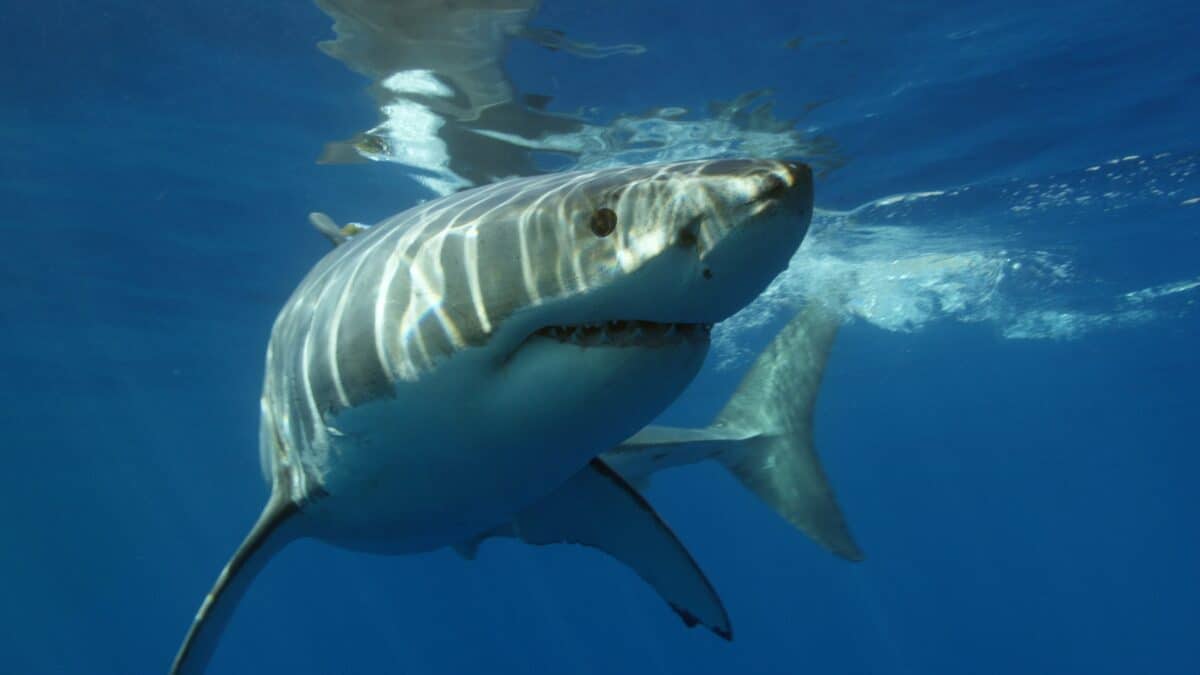
They are known for their impressive size, reaching remarkable lengths of up to 20 feet and weighing a massive 2 tons or more. Current estimates indicate that the global population of great white sharks comprises over 3,000 individuals.
As apex predators reigning at the zenith of numerous marine food chains, great white sharks play a crucial role in the oceanic ecosystem. This blog will explore great white sharks, including their scientific classification and distribution, physical characteristics, and diet and hunting strategies.
Learning about these fascinating creatures will give us a greater appreciation for their importance within our oceans’ delicate life balance.
Understanding Great White Sharks
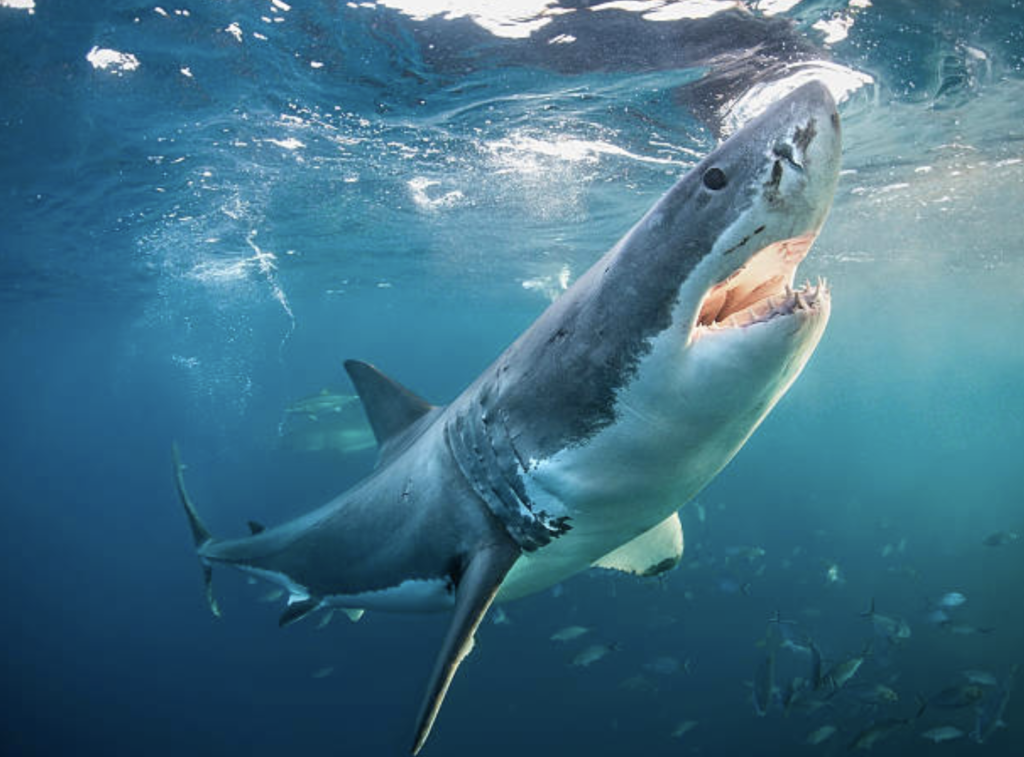
Great White Sharks belong to the family Lamnidae and genus Carcharodon – meaning “sharp tooth” – along with mako sharks and porbeagle sharks. These sharks exist in all temperate waters worldwide.
These massive sharks are usually 11-16 feet long (3-5 meters), but some can grow up to 20 feet (6 meters).
Their streamlined bodies are equipped with a powerful dorsal fin for stability while swimming at high speeds; grayish-black skin that camouflages them against darker depths; and 300 serrated teeth arranged in several rows, so new teeth rotate into place when old ones become damaged or worn down by heavy use.
Great white sharks feed primarily on fish, rays, other large sharks, seals, dolphins, whale carcasses, squids, octopuses, sea turtles, and other animals they can overpower with their size and strength.
They employ several hunting strategies, including stalking, cruising, breaching (jumping out of the water), or ambushing prey from below. Some researchers believe that great whites may even use tools during hunting by propping up pieces of kelp or debris to surprise unsuspecting prey from beneath.
Deep Blue – Estimated Length: 20 feet (6.1 meters)
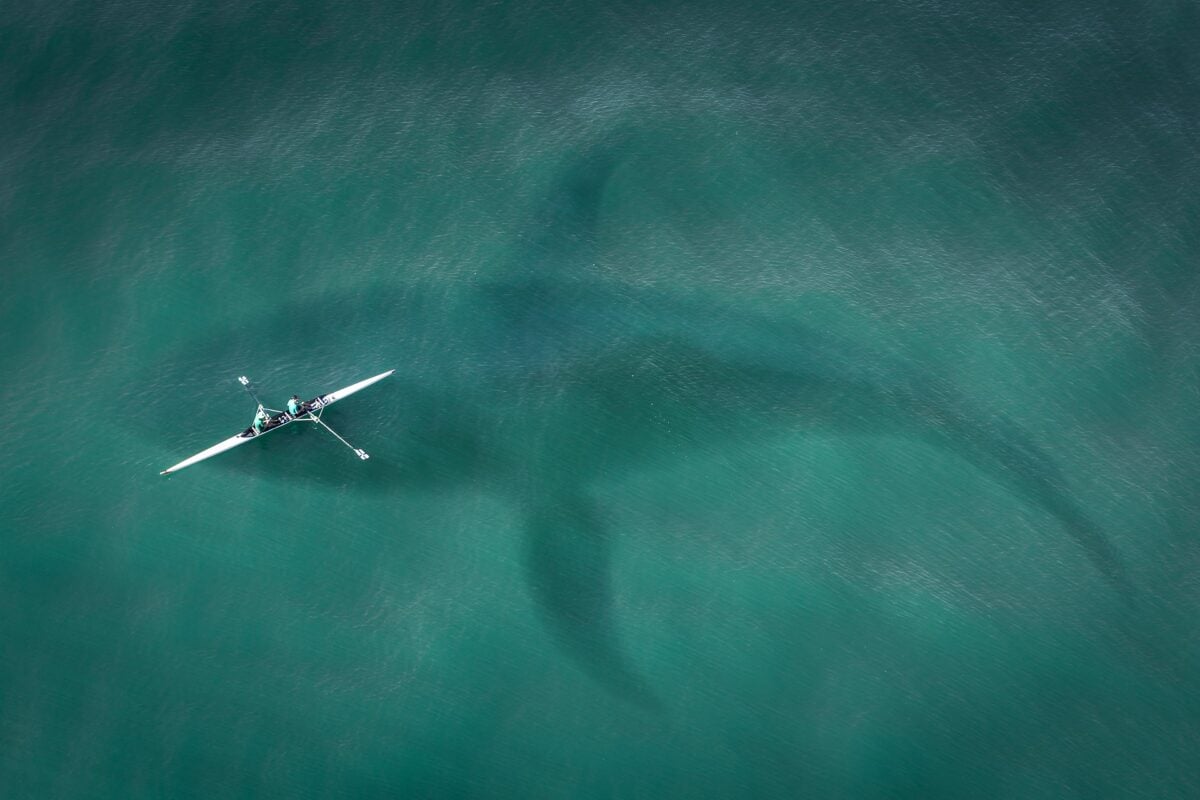
Deep Blue was discovered by marine biologists and researchers in 2013 near Isla de Guadalupe, Mexico. It is considered one of the biggest great white sharks ever recorded. This migty white species was approximately 20 feet long and 50 years old.
In 2014, shark researcher Mauricio Hoyos Padilla captured Deep Blue on video, contributing valuable data to the scientific community.
The discovery of Deep Blue has significantly impacted our understanding of this animal. Her massive size and advanced age have provided information about these apex predators’ growth rates and lifespans.
Furthermore, the Deep Blue’s ability to thrive in her environment has contributed to our understanding of the ecological factors necessary for the survival and well-being of these formidable creatures.
The Cuban Great White – Estimated Length: 21 feet (6.4 meters)
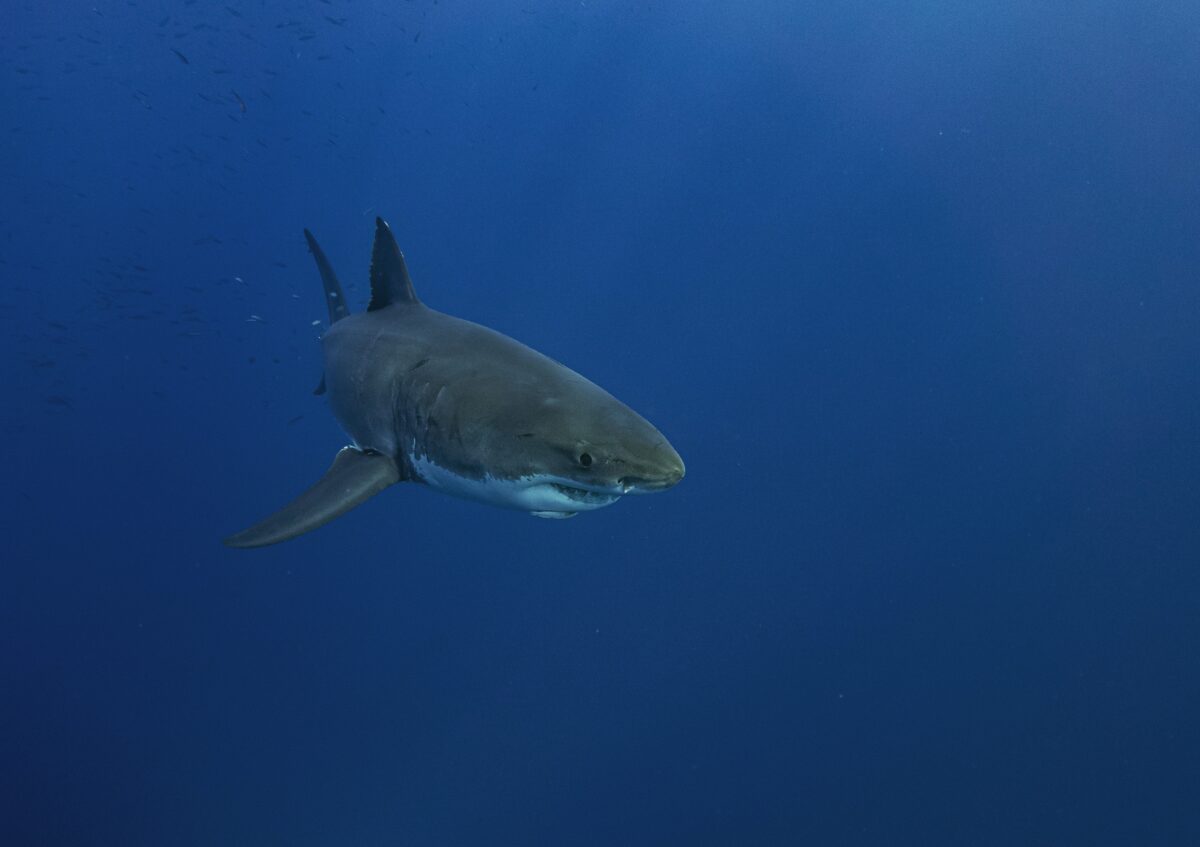
The tale of the Cuban Great White dates back to 1945 when fishermen reportedly came across an immense great white shark while fishing off the coast of Cuba.
This shark, estimated to 21 feet long, was so huge that the fishermen opted to kill it and bring it to shore. The marine biologists measured the shark’s weight to impressively 7,000 pounds (3,175kg).
The Cuban Great White has been the subject of controversy over the years. Skeptics have questioned the accuracy of the shark’s measurements and the legitimacy of the documentation supporting the encounter.
Additionally, some experts argue that these measurements may need to be more accurate due to the lack of scientific measuring equipment at the time.
Other Notable Great White Shark Encounters and Their Sizes
Throughout history, many recorded encounters of massive great white sharks have occurred. Some of these include:
– The Shark of Ledge Point, Australia, was estimated to be 19.6 feet (5.97 meters) long.
– The Malta Shark, encountered in 1987, had an estimated length of 19.4 feet (5.9 meters).
– The Port Fairy Shark, discovered in 1870 in Australia, was believed to be approximately 18 feet (5.49 meters) long.
Factors Contributing to the Size of Great White Sharks
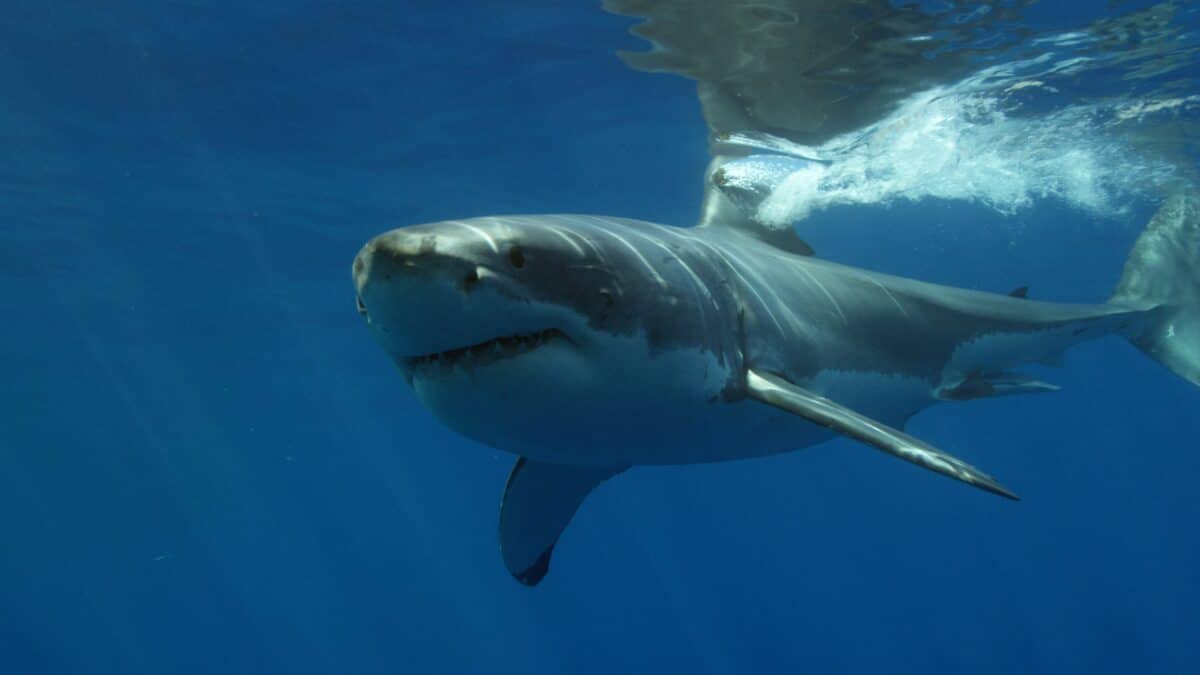
Genetics and the Influence of Inheritance
Genetics plays a substantial role in determining the size of great white sharks. Scientists have found that there can be significant size differences between males and females. Females typically being more extensive. Inherited traits from parents can contribute to the extraordinary measure of some great white sharks.
Food Availability
Food availability significantly impacts the growth and size of this animal. A rich, consistent food supply allows them to grow steadily and reach their maximum size. In contrast, limited food sources can stunt their growth and prevent them from reaching their full potential.
Water Temperature and Climate
Water temperature and climate also influence their size. Warmer waters generally promote faster growth rates, while colder waters can slow their growth. Additionally, sharks in areas with changing temperature changes may experience variations in growth rates throughout the year.
Age and Growth Rate of Great White Sharks
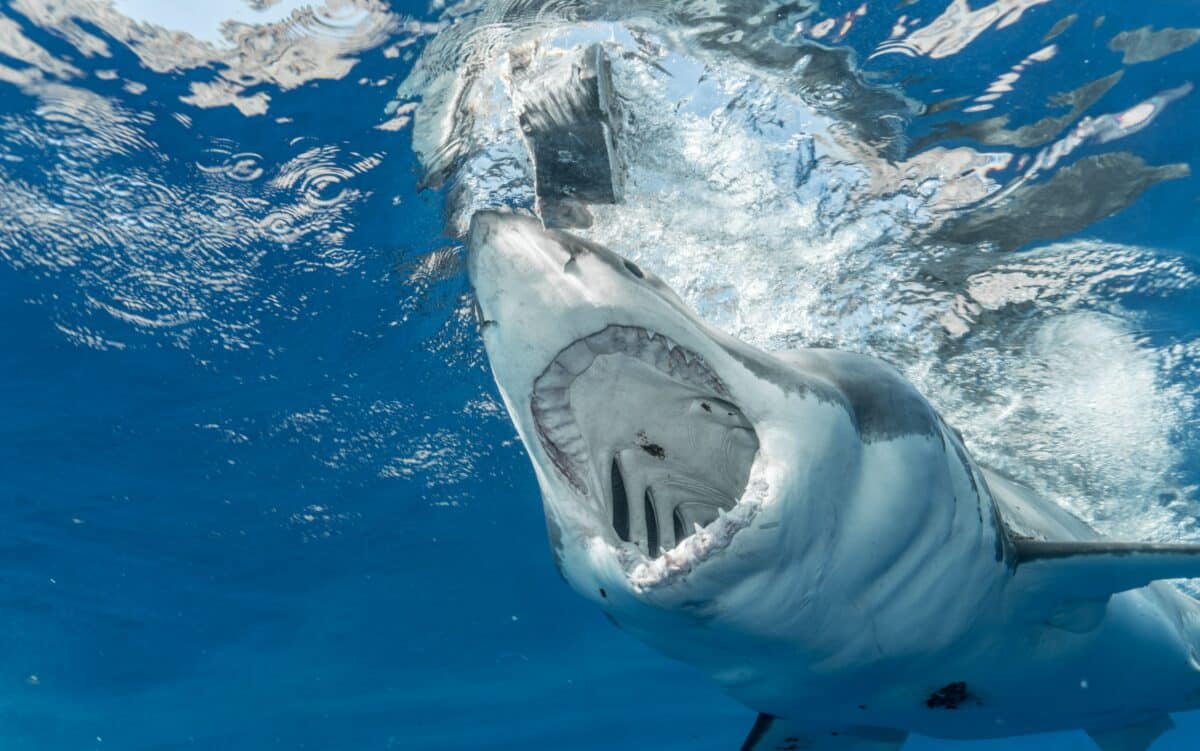
A great white shark’s age and growth rate also affect its final size. Sharks with a longer lifespan or faster growth rate can reach more significant heights than their counterparts. They grow throughout their entire lives, so older sharks can grow to incredible sizes. Deep Blue’s advanced age allowed her to reach an impressive length of 20 feet.
Conservation Efforts and the Protection of Great White Sharks
The great white shark (Carcharodon carcharias) is one of the most iconic apex predators in the ocean. Understanding these incredible marine predators is essential for their conservation and protection.
Due to the public perception of the white shark – as a fearsome predator – hunting expeditions have severely reduced the existing population.
Additionally, their capacity to survive is becoming increasingly more difficult as prey decreases. Overfishing and unsustainable fishing tactics have resulted in a drop in this animal’s principal food sources.
In order to protect this species, regional and international conservation efforts exist. These efforts include; hunting and trade laws, shark sanctuaries, and marine protected areas.
We must keep up our efforts to monitor their populations, comprehend their behavior, encourage sustainable fishing methods, and inform future generations, mainly due to their significant part in healthy ocean ecosystems.
We must collaborate worldwide to ensure these majestic animals continue to surf our waters for future generations!
If you want to learn more about these animals’ conversation status, visit WWF.
Conclusion on Great White Sharks
In the exploration of great white sharks, it is evident that these marine creatures are highly complex and fascinating predators. The most prominent white sharks are formidable and valuable marine ecosystem components among these impressive species.
Their highly developed sense of smell and unique electroreception abilities make them highly efficient hunters. The social structure of this creature is intricate and centered around size-related dominance. More giant sharks generally have priority access to food and choice mating partners.
Additionally, due to their slow growth rates and delayed sexual maturity. The population is vulnerable to threats, including over-fishing, bycatch, pollution, and habitat degradation.
Thank you for reading this article. If you are interested in learning more about the might creatures living under the surface head over to Great White Shark Vs. Tiger Shark
- Man Rescues Abandon Puppy in the Snow – Turns out to be a Wolf - April 23, 2024
- Groomer Turns Cat into CATZILLA - April 23, 2024
- Cat’s Funny Reaction to Cat-Cake being Cut - April 23, 2024

